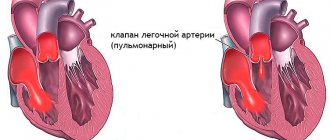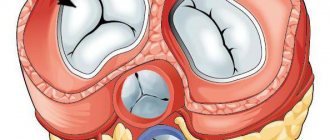Properties of transaminases
Transamination is one of the processes of nitrogen metabolism, in which new amino acids are synthesized through the transit of amino and keto acids without the release of ammonia. This was highlighted in 1937 by scientists M. G. Kritsman and A. E. Braunstein.
At the same time, direct and reverse reactions occur, i.e., a reversible transfer of amino groups from an amino acid to a keto acid. In this case, vit is required as a coenzyme. AT 6.
The name of liver transaminases (and there are 2 of them) is determined by the name of the acid itself involved in the process of transit of the amino group: if it is aspartanic, then the enzyme is called aspartate aminotransferase (AST or AST), and if it is alanine, then it is alanine aminotransferase (ALT or ALT). Each of them has its own characteristics.
What are transaminases
Transaminases, or transferases, are enzyme catalysts for chemical reactions of nitrogen metabolism, the main task of which is the transport of amino groups for the formation of new amino acids. Biochemical processes requiring their participation are carried out mainly in the liver.
The transit movement of transaminases in the blood normally does not affect the test results; in quantitative terms, their concentration is up to 31 and 37 U/l for ALT and 31 and 47 U/l for AST for women and men, respectively.
Liver transferases determined by standard laboratory tests:
- alanine aminotransferase, or alanine transaminase (ALT);
- aspartate aminotransferase, or aspartic transaminase (AST).
The level of enzymes in a healthy liver is influenced by such characteristics as age (increased values in newborns), gender (the level of transaminases in the blood in women is lower than in men), excess body weight (a slight increase in transaminases is observed).
Role in the body
Increased activity of liver transaminases - what is it? This is an increase in their level and it always indicates necrosis of organ tissue and the presence of diseases. AST (aspartate aminotransferase) is an enzyme that is sensitive to changes in the myocardium, liver and brain. If their cells are intact and functioning normally, AST does not increase.
ALT (alanine aminotransferase) is an enzyme that is the main indicator of liver changes.
The importance of transaminases in therapy
Most often, an increase in aminotransferases is an unfavorable diagnostic sign, indicating the destruction of hepatocytes. Elevated enzyme levels may be detected after normalization of values. This indicates the development of a new disease or an exacerbation of an old pathology - the renewed death of liver cells.
A high concentration of enzyme substances is not a disease, but only an indicator reflecting the presence of pathology. To normalize the values, it is necessary to eradicate the main source. The detected disease is being treated. Extremely high enzyme values require inpatient treatment.
In case of gland pathologies, the therapeutic course scheme is determined by the specific disease. Thus, for the viral form of hepatitis, antiviral agents are prescribed, which are highly effective in the acute period or at the initial stage of development. Against the background of toxic or alcoholic forms of hepatitis, symptomatic therapy is required.
When the cause is cirrhosis of the liver, mechanical injury to the organ, surgical intervention is performed, which involves excision of the affected liver tissue.
Due to the high sensitivity of the indicators, doctors can detect abnormalities in the gland in the absence of a characteristic clinical picture.
Diagnostic principles
Aminotransferases are found in all cells of the body, but they are concentrated in the liver and heart. Therefore, the failure of these organs can most quickly be judged by the level of these enzymes.
We can conclude, speaking about the activity of liver transaminases, that these are unique markers of inflammation. The fact is that the symptoms of the pathology appear only after 2 weeks, but cell death in various acute diseases (inflammation, cirrhosis or MI) leads to a sharp release of these enzymes into the blood, by which one can judge the presence of a problem.
That is, aminotransferases resemble leukocytes in the speed of their appearance, but it is impossible to determine the nature of the pathology from them.
These are not specific tests, but reliable indicators of liver and heart pathologies. A combination of signs produced by a doctor helps to determine the range of diseases and narrow it down. For example, an increase in ALT + bilirubin is usually observed with cholecystitis.
Normal ALT and AST levels in the blood
Biochemical examination allows you to determine disturbances in the functioning of many organs, including the liver and heart. AST shows abnormalities in the functioning of the heart, and ALT shows abnormalities in the functioning of the liver. If the level is elevated, what does this mean? Which indicators of these parameters are considered normal and which are deviations?
For the AST indicator, the norm will be 278 - 126 nmol/(s l) or 0.10 - 0.46 µmol/(ml h). These are indicators that are taken into account in the Frenkel and Reitman method; AST in a child has other indicators.
If the blood test is performed using an optical test, then at 30° C the norm will be 2-25 IU, the child’s indicator will be changed.
The strongest increases in ALT levels occur in liver diseases. This is especially affected by the appearance of hepatitis. If processes of liver cirrhosis are observed, then the AST indicator will exceed the ATL indicator.
If a blood test shows that AST is increased two or more times, this may indicate the presence of a myocardial infarction. If AST is initially elevated, and then it decreases after 4 days, then there most likely was no heart attack.
A child should not have more than 50 units per liter of ALT, and 55 units per liter of AST (up to 9 years). In a newborn baby, AST will remain at 140 units per liter (up to 5 days).
Reasons for the increase
Liver transaminases are elevated with the development of liver and cardiac pathologies. This can be very dangerous. They say:
- about the presence of hepatitis (any form);
- Reye's syndrome - hepatic encephalopathy due to aspirin use;
- steatosis;
- fibrosis;
- cirrhosis;
- cholestasis;
- tumors;
- metastases from other organs to the liver;
- Wilson's disease or hepatocerebral dystrophy (congenital disorder of copper metabolism);
- myocardial infarction (with it, liver transaminases are always persistently elevated);
- parasitic infestations, because in the course of their life, parasites secrete toxins with the destruction of hepatocytes;
- liver injuries also lead to cell necrosis.
With cholestasis, stagnation of bile leads to overstretching of liver cells, their metabolism is disrupted, and in the final chain of disorders, the cells undergo necrosis.
Fatty liver also causes the destruction of normal liver cells and their replacement with fatty ones. In cirrhosis, the cells become necrotic and are replaced by rough connective tissue. Tumors destroy not only hepatocytes, but also surrounding tissues, causing inflammation.
Toxic processes in the liver after long-term use of drugs have been proven, and an increase in transaminases occurs when using any form of the drug - both tablets and infusions are equally harmful. Among them:
- analgesics, statins, antibiotics;
- anabolic steroid;
- NSAIDs;
- Aspirin, Paracetamol, MAO inhibitors (Selegiline, Imipramine);
- hormones;
- sulfonamides;
- barbiturates;
- cytostatics, immunosuppressants;
- Iron and copper preparations also necrotize liver tissue.
So far we have been talking about persistent increases in enzymes. But there is another type of increase - periodic.
Periodic or transient increases in the activity of liver transaminases can also be caused by other extrahepatic pathologies. It can occur with acute pancreatitis, hypothyroidism, obesity, mononucleosis, muscle injuries, burns, muscular dystrophies, and bronze diabetes.
A slight increase in liver transaminases is quite common. It can be triggered by poor ecology, consumption of certain foods rich, for example, in nitrates, pesticides, and trans fats. In any case, deviation from the norm of enzymes in the form of their increase requires a visit to a doctor and a full examination. Especially when heaviness and pain in the right hypochondrium are added.
Reasons for fluctuations in AST, ALT indicators
Transaminases do not show activity in the blood of a healthy person; a sharp increase in their level is an alarming signal. It is worth knowing that an increase in indicators is not always caused by liver disease. AST is used as a marker of cardiac muscle damage during myocardial infarction; The concentration also increases during a severe attack of angina.
Transaminases are elevated in skeletal injuries, burns, the presence of acute inflammation of the pancreas or gall bladder, sepsis and shock conditions.
Therefore, the determination of the enzymatic activity of transaminases cannot be classified as specific tests. But at the same time, AST and ALT are reliable and sensitive indicators of liver damage in the presence of clinical symptoms or anamnestic data about the disease.
An increase in the activity of hepatic transaminases applicable to liver pathology is observed in the following cases:
1. Necrosis of hepatocytes (liver cells).
Necrosis is an irreversible process during which a cell ceases to exist as a structural and functional unit of tissue. The integrity of the cell membrane is disrupted and cellular components come out, which leads to an increase in the concentration of biologically active intracellular substances in the blood.
Massive necrosis of hepatocytes provokes a rapid and multiple increase in liver transaminases. For the same reason, significantly expressed liver cirrhosis is not accompanied by enzyme hyperactivity: there are too few functioning hepatocytes for their destruction to cause an increase in AST and ALT.
Transaminase levels are normal, although the process is already in the stage of decompensation. ALT is considered a more sensitive indicator for liver diseases, therefore, with appropriate symptoms, first of all, pay attention to its level.
Necrotic changes in liver tissue are observed in acute and chronic hepatitis of various etiologies: viral, toxic (in particular, alcoholic and medicinal), acute hypoxia, which occurs as a consequence of a sharp drop in blood pressure during shock.
The release of enzymes directly depends on the number of affected cells, so the severity of the process, before specific studies are carried out, is assessed by the quantitative level of AST and ALT transaminases and the increase compared to the norm.
However, to determine further tactics, additional examination is necessary along with a biochemical blood test over time.
2. Cholestasis (stagnation of bile).
Despite the fact that disruption of the outflow of bile can occur for various reasons, its prolonged stagnation in conditions of preserved secretion by hepatocytes leads to overextension, metabolic disorders, and, finally, to necrosis.
3.
Dystrophic changes.
Dystrophy is a disorder of tissue metabolism. It somehow accompanies inflammation; As its variety, we can consider the replacement of necrotic areas with connective tissue, which constitutes the pathogenetic basis of liver cirrhosis.
Among the causes of increased transaminases is fatty liver degeneration (alcoholic fatty hepatosis).
Genetic diseases are also important, for example, Wilson-Konovalov disease (hepatolenticular degeneration), characterized by excessive accumulation of copper.
4. Neoplasms.
Liver tumors, both benign and malignant, destroy surrounding tissues during their growth, which causes inflammation. This is reflected in a persistent increase in liver transaminases.
A similar effect is exerted by metastases - tumor cells carried through the blood or lymphatic fluid, forming secondary tumor foci in the liver tissue.
5. Parasitic infestations.
Helminths that parasitize the hepatobiliary system (giardia, roundworm, opisthorchis, echinococcus) cause inflammation and obstruction (blocking) of the biliary tract, as well as secondary infection, which is accompanied by an increase in transaminases.
6. Medicinal effects.
Today, science has data from numerous studies that have proven that medications cause elevated transaminases. These include:
- antibacterial agents (tetracycline, erythromycin, gentamicin, ampicillin);
- anabolic steroids (decanabol, eubolin);
- non-steroidal anti-inflammatory drugs (acetylsalicylic acid, indomethacin, paracetamol);
- monoamine oxidase inhibitors (selegiline, imipramine);
- testosterone, progesterone, oral contraceptives;
- sulfonamide drugs (biseptol, berlocid);
- barbiturates (secobarbital, reposal);
- cytostatics, immunosuppressants (azathioprine, cyclosporine);
preparations containing copper and iron.
The increase in transaminases does not depend on the form of the drug; tablets, like intravenous infusions, can adversely affect the liver or cause false activity of AST and ALT, which is due to the specifics of their determination in blood serum.
Ritis coefficient
Italian scientist Fernando de Ritis proposed a different approach to assessing transaminase activity. In other words, in addition to the quantitative calculation of each enzyme, the ratio of enzymes relative to each other - the Ritis coefficient - should also be determined.
A ratio of 0.9-1.7 is not a disease; usually the figure is 1.33. If the coefficient fluctuates around 0-0.5, then this indicates a carriage of hepatitis of viral etiology.
With values of 0.55-0.83, one can think of an exacerbation of hepatitis. In other words, a coefficient <1 indicates infection and inflammation.
If K≥1, this will indicate liver dystrophy and chronic hepatitis; K≥2 – hepatitis has an alcoholic etiology, or it indicates the development of myocardial infarction. The de Ritis coefficient is based on the fact that although ALT and AST are considered hepatic transaminases, ALT has a greater concentration in the liver, and AST is distributed in almost equal quantities in the heart and liver.
What are transaminases?
- The presence of transaminase in the body indicates the presence of diseases. These may include heart attack, hepatitis, pancreatitis
- Transaminases are transporters between two processes: carbon and nitrogen metabolism.
Processes that directly require their participation are located in the liver. The analysis does not show the rate of transport of transaminases in the blood; attention is paid only to their quantitative ratio.
There are two types of transaminases in the body, which are determined by the analysis:
- ATL – in males up to 37, in women up to 31 U/l,
- AST – for males the indicator is 47, for females – 31 U/l.
Based on the readings of their values, a qualified doctor can determine which organ is under attack, identify the rate of development of the disease, and indicate the stage of the lesion.
Factors influencing deviations of ATL and AST levels from the norm will be discussed below.
Where is blood taken for transaminase analysis?
For further examination of blood for the quantitative content of transaminases in the body, a sample is taken from a vein.
Normal transaminase levels
In the body, the threshold of these values is determined using biochemical analysis. For accurate results, it should be taken on an empty stomach.
In the absence of pathologies, normal transaminase levels are different and are shown in Table 1
Table 1 Normal blood levels of ALT and AST in men, women and children
| Age/gender | Children under 9 years old | Children over 9 years old | Men | Women |
| Norm ALT Units/l | Up to 50 | Up to 50 | Up to 45 | Up to 31 |
| Norm AST Units/l | Up to 140 | Up to 55 | Up to 47 |
The amount of transaminases in the absence of liver pathologies is influenced by several factors:
- Age category (in newborn children the level is significantly increased),
- Separation by gender factor (in men the concentration of transaminases is increased, unlike women),
- Excess weight (increased concentration of transaminases is noted).
What influences transaminase deviations from the norm?
- An increase in the indicator is not necessarily due to liver pathologies.
- In the normal state of the body, transaminases do not show any signs, so a sharp increase in their level is an alarm signal.
- AST marks heart disease, heart attacks, and angina attacks.
- The growth of transaminases is also caused by injuries of the musculoskeletal system, burns, states of shock, and sepsis.
Determining AST and ALT norms is important for identifying asymptomatic liver pathologies in the initial stages, as well as for identifying other more complex diseases.
An increase in the quantitative indicator of transaminases located in the liver is possible with:
- The death of liver cells (necrosis) is an irreversible process, as a result of which the tissue cell dies and is no longer functional. The outer boundaries of the membrane collapse and its internal components are released out, which leads to an increase in transaminase.
Cell death in large numbers leads to a large increase in the concentration of liver transaminases. Liver cirrhosis is not accompanied by their increase, since there are too few working cells left for their death to increase ALT and AST.
Death of liver cells
The increase in the number of liver enzymes depends on the quantitative indicator of infected cells. The stage of development of the pathology and its severity are assessed by AST and ALT in the blood.
- Stagnation of bile Long-term stagnation of bile, with further production of hepatocytes, leads to cholestasis, simply called bile stagnation. As a result of oversaturation, the liver stretches and metabolism is disrupted, which leads to cell death.
- Dystrophy This process is a violation of the metabolism of liver tissue. Inherent inflammation of the liver, which is the basis of liver cirrhosis. The causes of increased transaminases are fats and alcohol.
- Tumors of different types (benign and malignant) The progression of tumors destroys the tissue around it, resulting in inflammation. This follows because liver transaminases are elevated. Metastases have the same effect.
- Medications Some medications can provoke a quantitative increase in transaminases. These include:
- Preparations with a concentration of copper and iron,
- Barbiturates (reposal, secobarbital),
- Testosterone,
- Anti-inflammatory drugs (acetylsalicylic acid, paracetamol, indomethacin),
- Biseptol, berlocid,
- Anabolic steroids (decanabol, eubolin),
- and others.
The form of drug use does not affect the growth of transaminases. Their different forms can have an equally bad effect on liver function or give inaccurate levels of transaminases, this follows from the determination of blood serum.
How to recognize obvious symptoms?
Factors of liver damage can have a variety of causes, and are supported by a range of complex symptoms, which are complemented by an increase in the concentration of transaminases:
- Constant fatigue and weakness, which appeared unexpectedly or has been present for a long period of time,
- More obvious expression of the network of saphenous veins,
- Incessant itching of the skin, which becomes stronger at night,
- Darkening of urine, loss of color of stool,
- Lost appetite
- The skin turns yellow
- Bleeding of mucous membranes, nosebleeds,
- Nausea and vomiting.
There is an increased activity of hepatitis to transaminases. They increase the amount in the case of hepatitis A (10-15 days before the onset of icteric syndrome). With hepatitis B, AST is increased to a greater extent.
What is AST?
AST – aspartate aminotransferase, takes part in the movement of aspartate amino acids. It is found mostly in the heart area, but there are also kidneys, as well as in the liver and muscle tissue.
Normal AST levels in the human body are given below (Table 2):
Table 2
| Category of people | Children under 9 years old | Conjured up | Men | Women |
| Normal values Units/l | less than 55 | Up to 140 | 20-40 | 15-31 |
What causes AST readings to increase?
An increase in the quantitative indicators of AST occurs:
- For burns,
- Injuries,
- Myocardial infarction,
- Hepatitis,
- Pancreatitis,
- Alcoholism,
- Liver cancer
- Liver tumors,
- Cholestasis,
- Autoimmune diseases,
- and other pathologies.
AST is mostly used to detect liver diseases and heart pathologies. If other organs are destroyed, then it grows in small quantities, and therefore is not so important.
When a heart attack occurs, AST becomes five times higher in the blood and remains at this level for 5 days, but ALT increases slightly. If, after 5 days, the AST level does not fall, but rather increases, this indicates an increase in the area of death of myocardial tissue.
An increase in AST also occurs when liver tissue dies, and the higher this value, the larger the affected area.
If you detect any symptoms or indicators, consult a doctor immediately! Heart and liver diseases do not allow time to procrastinate.
How do tests distinguish heart disease from liver disease?
The doctor determines in which organ the disease is located by seeing the ratio of ALT to AST. Their normal ratio is 1.3. When the reading is above 1.3, a heart attack is diagnosed, and when it is below 1.3, liver disease is diagnosed.
Symptomatic manifestations of disorders
It should be noted that the symptoms of these disorders are always the same, regardless of the type of pathology. When liver transaminases are elevated, the symptoms are:
- chronic lethargy and fatigue;
- attacks of sudden weakness; loss of appetite and nausea for no reason;
- aching pain in the stomach;
- heaviness in the right hypochondrium;
- bloating and gas accumulation;
- generalized night itching of the skin;
- nosebleeds;
- darkening of urine and acholic stool;
- possible yellowing of the skin;
- decreased activity and drowsiness are often observed.
Even if one symptom is noted, it does not hurt to visit a doctor. Timely treatment will allow you to get rid of the disease completely. Otherwise, the pathology becomes advanced and often irreversible.
Diagnosis of diseases
In order for the examination results to be accurate, the patient must prepare for them. The day before the examination, the consumption of alcoholic beverages is completely excluded. Smoking is prohibited one hour before.
Blood is drawn from the patient in the morning. There should be at least 12 hours between the last meal and the blood draw. At the same time, drinking water is allowed. In the morning, coffee, tea, and juices are excluded.
On the eve of the examination, physical and emotional overload is completely excluded so as not to distort the liver test results during the examination.
If you have liver pathology, you need to examine your blood counts every month.
Classification
To determine the level of hyperenzymemia, a special scale is used:
- Moderate degree – the level is slightly increased. This is possible with hepatitis of alcoholic or viral origin.
- Average - indicators are increased 6 times from the norm - necrotic processes in the liver.
- High level - an increase in the norm by 10 times or more - liver ischemia.
The acute condition caused by the disease causes transaminase activity: for example, with hepatitis, hyperenzymeemia is observed on the 14-20th day of illness, and then within a month the levels decrease to normal.
In the chronic course of the disease, during the period of remission, hyperenzymemia is not observed and the indicators are moderately or slightly increased. Cirrhosis in the latent stage will not show an increase in transaminases.
To make a diagnosis, the doctor must evaluate not only the increase in transaminase levels, but also their combination with other criteria. These indicators significantly narrow the range of pathologies. For example, jaundice or acute liver failure necessarily cause an increase in bilirubin. The concentration of enzymes may increase slightly. This is called bilirubin aminotransferase dissociation. Only a specialist can determine such subtleties. Therefore, self-diagnosis and self-medication are excluded.
Excessive levels of liver transaminases or hyperenzymemia are an indicator of trouble in the liver, indicating necrosis of liver cells. This condition can occur again, replacing normalization. This usually indicates the onset of a new inflammation or relapse of a chronic pathology.
Transaminase in the blood: what it is, analysis features and norms
A blood test is considered the first laboratory procedure aimed at identifying the causes of various ailments.
General biochemical analysis is not the only type of diagnosis; there are more narrowly focused tests, one of which is the ALT test.
This diagnosis reveals the level of transaminase in the blood, the norm of which depends on gender, and in children, on age. This article will help you understand what transaminases are, what are the causes and symptoms of their increase.
Diagnosis of liver diseases by analyzing transaminase in the blood.
What are transaminases
Transaminases are considered to be enzymes that are found in organ cells. When tissue damage occurs, injury occurs, or various pathologies are observed, enzymes leave the cells, which leads to an increase in their levels in the blood. They are very important for the body.
Thus, transaminases take part in processes that are necessary for nitrogen and energy metabolism. With their help, the transfer of amino groups from amino acids to keto acids is accelerated.
Detection of transaminases in the blood during laboratory testing is necessary, as this is a sign of certain ailments. In this diagnosis, special attention is paid to the enzymes AST and ALT. They are considered markers of damage to the heart, liver, pancreas, etc.
Thanks to the ratio of their levels, it is possible to accurately determine which organ is affected, as well as monitor the dynamics of the pathological process.
Normal ALT and AST in adults and children
The ALT protein stands for alanine aminotransferase, since its task is to transfer the amino acid alanine. Its content is observed in the liver, heart cells, kidneys, muscles, and pancreas.
The permissible values in the blood of women and men of this protein are no more than 32 and less than 40 units/liter, respectively.
When diagnosing blood in children, their age is taken into account, since the enzyme rate depends on this parameter, thus the rate (units/liter):
- For 5 days after birth - up to 49.
- Up to 6 months – 56.
- Up to 1 year – 54.
- Up to 3 years – 33.
- Up to 6 years – 29.
- Up to 12 years – more than 39.
The enzyme AST stands for aspartate aminotransferase and takes part in the process of transferring the amino acid aspartate. Its content is mainly in the liver, muscles, kidneys, and heart. As for the AST norm, doctors talk about the following numbers (units/liter):
- For females – 20-40.
- For males – 15-31.
- For newborns up to – 140.
- At the age of 9 years – 55.
Causes of transaminase fluctuations
High levels of transaminases, namely the ALT enzyme, can appear due to the following diseases:
- Cirrhosis.
- Tumor decay.
- Acute pancreatitis.
- Extensive heart attack.
- Acute hepatitis.
- Burns.
- Malignant tumor.
- Extensive muscle damage.
- Obstructive jaundice.
- Heart diseases that can destroy heart muscle cells.
The postoperative period, chronic hepatitis, as well as mononucleosis and fatty hepatosis can lead to fluctuations in the indicator. But in these cases there is only a slight increase.
All of the above reasons are pathological in nature, but there are also physiological reasons:
- Excessive physical activity.
- Use of certain medications (antibiotics, contraceptives, echinacea, etc.).
- The use of dietary supplements that have a negative effect on liver cells.
- Pregnancy, namely the first months.
- Abuse of fast food, soda, processed foods, alcoholic beverages, etc.
During diagnosis, ALT indicates liver disease, several weeks before the onset of symptoms of the disease. If the disease occurs in an acute form, the enzyme level is characterized by a fivefold increase, and if high levels remain, we can talk about serious tissue destruction.
What to do if aminotransferases are elevated?
This question is inappropriate, because eliminating the causative pathology will also reduce the level of enzymes. There is no need to invent other methods. High transaminase numbers indicate the need for urgent additional research and hospitalization.
In addition, the following may be prescribed:
- various blood tests;
- electrolyte balance;
- ECG;
- Ultrasound;
- CT.
If it is necessary to determine the DNA of viruses in hepatitis, PCR is performed, as well as ELISA for antibodies. Since these tests have high prices, they are not prescribed without appropriate reasons.
By getting rid of the underlying causes, it is possible to reduce the level of liver enzymes. In this case, the restored body system will stop releasing transaminases into the blood.
As an additional therapy, you can use folk remedies. It is important that all treatment-related actions are previously agreed upon with a specialist. Before use, it is necessary to be examined and identify the exact causes. To improve your liver health, the following can help:
- Oatmeal. Oatmeal helps cleanse the body of harmful substances.
- Pumpkin will help lower cholesterol levels. To prepare it, you need to boil it by adding honey first.
- Three times a day you should drink a glass of water with the addition of 5 g of turmeric and 10 g of honey.
- Beetroot juice is also very beneficial for the liver. Take it after meals 3 times a day.
Increasing indicators: what does this mean for diagnosing cardiac pathologies?
Aminotransferases are markers of myocardial infarction . An increase in their number indicates the death of a section of the heart muscle and the release of these enzymes from damaged cells.
Biochemical analysis, namely determination of the level of alanine aminotransferase, aspartate aminotransferase and creatine kinase, allows us to determine the severity of the disease and the time from the onset of symptoms to the moment of diagnosis.
During myocardial infarction, the following changes occur in the body, which is reflected in laboratory data:
- After an ischemic attack, the amount of creatine kinase in the blood immediately increases. This enzyme is determined only if the analysis is carried out immediately after an attack. The numbers quickly return to their original values.
- The next stage is the growth of AST. Aspartate transaminase exhibits the greatest activity in the heart muscle, therefore it is the main marker of myocardial infarction.
- ALT increases last. Transamination enzymes increase on the second or third day from the onset of the disease. The values exceed the norm several times. In particularly severe cases, the figure can be 20 times higher than normal figures.
In addition to the above enzymes, cells exposed to ischemia release lactate dehydrogenase into the blood . Determination of this enzyme can serve as an additional factor in the diagnosis of lesions and subsequent treatment.
In addition to myocardial infarction, destruction of cardiomyocytes also occurs in heart failure, myocarditis, rheumatic carditis and some other diseases. This also contributes to an increase in the number of transferases in the bloodstream.
Implications for treatment
The liver function test is sensitive to liver diseases, so it is often used to assess the progress of therapy in conjunction with other studies.
Liver diseases with hyperenzymemia always require monitoring over time and appropriate therapy. Doctors take into account that enzyme levels do not always indicate recovery. Latent cirrhosis, for example, is characterized by normal levels of enzymes in the blood. Therefore, you need to be examined and treated by a doctor.
Causes of low transaminases
Bowel disease
Some disorders and diseases that affect the intestines can affect the reduction of transaminase levels in the blood, in addition to other elements, such as the case of certain nutrients and proteins.
On the other hand, it may happen that one type or group of transaminases fails and another type or group increases because the intestines are not able to fully absorb many of the nutrients in food.
Among the intestinal diseases that can reduce transaminase levels are the following:
- Crohn's disease: A chronic inflammatory condition of the intestinal tract that primarily affects the lower small intestine and/or colon.
- Celiac disease A digestive disease in which a person is intolerant to gluten, a protein found in grains such as wheat, oats, barley and rye.
- Whipple's disease: A systemic disease—uncommon—caused by the bacterium Tropherima whipple, which affects the gastrointestinal tract, heart, joints, heart, lungs, and nervous system.
Vitamin B6 deficiency
Since vitamin B6 is a water-soluble vitamin, this means that our body cannot store it, so it is important to get it through our diet. However, when we eat an inadequate diet, it can lead to dietary deficiency.
It is an essential vitamin for our body, as it is responsible for maintaining blood sugar levels and producing antibodies and hemoglobin, among other important functions.
In case of vitamin B6 deficiency, transaminases are usually decreased not only in the case of AST (GOT) transaminases, but also ALT (GPT).
Some liver diseases
Although most liver diseases cause transaminases in the blood to change, increasing them, this is not always the case. This is what happens with hepatitis infection, which causes damage to the liver, causing inflammation. Over time, being a chronic disease, it eventually causes cirrhosis of the liver.
This is a disease that currently has no cure (although there are new drugs that will provide an almost 100% cure), and yes, great progress has been made in its treatment.
On the other hand, when there are inadequate levels of albumin in the blood, it can also affect the reduction of transaminases in the blood. Albumin is a protein produced in the liver, so when any liver disease causes damage to the liver cells, they cannot perform their functions normally, unable to synthesize albumin.
Elevated transaminases causes treatment
Transaminases are proteins that play one of the main roles in cellular metabolism. Transaminases can be found in any organ, but their activity is more pronounced in the liver.
Role in the body
An increase in the level of these enzymes occurs due to the death of cells in the internal organs and indicates the presence of abnormalities in the functioning of the body. There are two types:
- AST (ASpartanine Transferase) is a specific enzyme that is sensitive to changes in the heart muscle , liver, and brain. As long as the cellular structure of these organs is not disturbed, the level of AST in the blood will be within normal limits.
- ALT (ALanine Transferase) is an enzyme that is the main indicator of liver disease.
As simple and accessible as possible about liver markers in the video below
Analysis
REFERENCE! The level of ALT and AST is determined by biochemical tests by taking venous blood.
Indications for analysis
The reason for donating blood to detect transaminases may be symptoms of a disease that causes an increase in the level of ALT and AST enzymes. For example, hepatitis, heart attack , gastrointestinal diseases. The attending physician will definitely send you for analysis if the following symptoms are detected:
- Chest pain on the left side and irregular heart rhythm.
- Pain in the right side of the abdomen (hypochondrium).
- Weakness, fatigue.
- Change in skin color (jaundice).
- Enlargement of the abdomen in infants.
- Long-term use of medications that can have a negative effect on liver function.
- Suspicion of internal organ injuries.
- Evaluation of treatment effectiveness.
- Toxic poisoning.
Preparing for analysis
To obtain a reliable result, the following rules must be observed:
- Blood is donated on an empty stomach, preferably in the morning.
- You are allowed to drink only ordinary boiled water.
- Do not take medications 10 days before the test.
- In a couple of days, you need to eliminate junk food (fried, sweet, salty) and alcohol from your diet.
- It is recommended to reduce physical activity to a minimum .
Norms of indicators
Indicators vary depending on gender and age:
Ask your question to a clinical laboratory diagnostics doctor
Anna Poniaeva. She graduated from the Nizhny Novgorod Medical Academy (2007-2014) and Residency in Clinical Laboratory Diagnostics (2014-2016).
Ask a question>>
| Enzyme | ALT, U/l (norm) | AST, U/l (norm) |
| Men | no more than 46 | no more than 48 |
| Women | no more than 31 | no more than 31 |
In children
| Age | ALT, U/l | AST, U/l |
| from 1 to 5 days | up to 49 | up to 50 |
| from 1 week to 6 months | up to 56 | up to 50 |
| from 6 months to 1 year | up to 54 | up to 50 |
| from 1 year to 3 years | up to 30 | up to 50 |
| from 3 to 6 years | up to 29 | up to 50 |
| from 7 to 12 years | up to 39 | up to 50 |
Causes of elevated enzyme levels: ALT and AST
ALT and AST levels increase in the blood when the tissue of the organ for which they are responsible is damaged, mainly the liver, gastrointestinal tract and heart muscle. A more detailed list of reasons for increased enzyme levels is presented below:
- Hepatitis of any etymology (the main diagnostic indicator is ALT).
- Oncological diseases of the liver.
- Benign liver tumors.
- Diseases associated with damage to the heart muscle (for this reason, a simultaneous increase in ALT and AST is also observed).
- During pregnancy, the level of ALT in the blood increases slightly; such deviations should not cause concern. But if during pregnancy there is a simultaneous increase in the levels of ALT and AST, then diagnostics of liver function is necessary.
- Advanced form of pancreatitis (ALT increases).
- Taking medications: warfarin, paracetamol, hormonal drugs (this may cause increased readings)
- Congenital liver pathologies in infants (increased GGT and ALT).
REFERENCE! Determining the de Ritis coefficient (the ratio of enzymes: AST to ALT) will help you navigate the diagnosis. Normally, the resulting value is from 0.9 to 1.7. If the coefficient value is more than 2, they speak of the death of cardiac muscle tissue. If the coefficient does not exceed 0.8, then liver failure occurs. The lower the score, the more serious the disease.
How to reduce indicators
Reducing the amount of ALT and AST enzymes in the blood is possible only by eliminating the underlying disease that caused the deviation from the norm. When the damaged organ completely restores its functions, it will stop releasing transaminases into the blood. Traditional medicine can help a diseased organ quickly cope with pathology and treat it.
ATTENTION! All prescriptions and treatment methods must be agreed upon with a doctor after a complete diagnosis and an accurate diagnosis has been identified.
Nutritional recipes to normalize liver and heart function:
- Dissolve half a teaspoon of turmeric and a tablespoon of honey in a glass of water. Take three times a day.
- Oatmeal with milk will help cleanse the liver of accumulated toxins.
- Juice from freshly squeezed beets.
- A delicious dessert of boiled pumpkin and honey will help remove cholesterol.
What are liver tests?
Liver tests combine types of laboratory tests aimed at identifying possible liver diseases.
Includes determination of the amount of liver enzymes and bilirubin in the blood:
- ALT (alanine aminotransferase).
- AST (aspartate aminotransferase).
- GGT (gammagrutanyltransferase).
- ALP (alkaline phosphatase).
- Total bilirubin.
REFERENCE! Alkaline phosphatase and GGT are indicators of bile stagnation. Bilirubin is the next stage of hemoglobin conversion and determines the degree of damage to liver tissue. The normal level of bilirubin in the blood is 3.4 - 17.0 µmol/l.
Prevention
- Liver disease can be prevented through a special diet that includes foods rich in vitamin D in your diet: milk, eggs, apples, sea fish, caviar, buckwheat and oatmeal. By eating healthy plant foods, you will help your liver become more resistant to disease and remove dangerous toxins. Eliminate fatty and salty foods from your diet so as not to overload your liver.
- Give up bad habits: alcohol and smoking.
- Avoid exposure to toxins. They can easily penetrate the body, having a detrimental effect on the liver.
- Do not self-medicate. Uncontrolled use of antibiotics may not bring indicators back to normal, but on the contrary, significantly weaken liver function.
Source: https://ufolabs.ru/povyshennye-transaminazy-prichiny-lechenie/
How to lower ALT/AST
To lower transaminases, you need to get rid of a causally significant factor (virus, bacterial infection, alcohol). Only in a medical institution can you find out the source of changes in indicators after a thorough diagnostic search. In accordance with the established diagnosis, the doctor will prescribe therapy (tablets effective against the disease) or refer you to another specialist (surgeon, infectious disease specialist, oncologist), which will allow you to reduce ALT/AST values.
I want to warn you that only with timely treatment can you effectively reduce the manifestations of the disease and achieve a complete recovery. Ignoring the problem is fraught with the development of severe complications, including death.
Elevated transaminases causes
A biochemical blood test is a very informative diagnostic examination, which sometimes gives incomprehensible results for people who have little knowledge of medical terminology.
For example, if analine aminotransferase is elevated, few people know what this means, but a qualified doctor will immediately say that this is a symptom of a pathological condition of one of the internal organs, most often liver disease.
What is analine aminotransferase?
What is Alt blood? Analine aminotransferase or alt is a very important endogenous enzyme. Its synthesis occurs at the intracellular level, a small amount is contained in the cells of the heart muscle, in the blood, but the largest amount of aminotransferase is observed in the cells of the liver tissue.
When a degenerative change occurs in the liver, the cells of this enzyme are released and enter the blood. A blood test for alt makes it possible to timely determine pathology in the organ and prevent further development of symptoms, for example, the appearance of jaundice.
If the organ is healthy and has not been subjected to mechanical trauma, the cells do not produce this enzyme.
Alanine transferase is an amino acid that is quickly converted into glucose. It activates the work of the central nervous system. The functions of this enzyme also include strengthening human protective functions, producing lymphocytes and normalizing sugar metabolism.
In the process of vital activity, the liver accumulates a certain amount of iron, cobalt, copper, vitamins B 12, A, D.
Due to injury to a person and with large blood losses, the liver splashes this blood into the damaged vessels, compensating for the lack of blood and improving the person’s condition.
Depending on the disease developing in the patient’s body, the concentration of alt can be increased or decreased.
When analine aminotransferase is elevated, your doctor will tell you what this means, as a rule, this is evidence of liver cell destruction.
If the ALT blood test is very elevated, then this is a sign of the last stage of cirrhosis. When alt is low, as a rule, this indicates problems with the functioning of the myocardium.
What are the norms of AST and ALT?11096
Indications for testing for the presence of ALT is the use of toxic medications, as well as in the presence of symptoms such as:
- general weakness;
- fast fatiguability;
- loss of appetite;
- constant nausea;
- bouts of vomiting;
- light stool;
- yellowing of the whites of the eyes;
- dark urine;
- bloating;
- painful sensations in the abdomen;
- yellow spots on the skin.
Alat analysis can be carried out not only as a diagnostic procedure, but also to monitor the effect of a certain type of medication. The amount of ALT in a blood test gives the doctor information about whether the patient is getting better or whether his condition has worsened.
Diagnosis of the level of alt in the blood is also necessary to monitor the condition of a person who is constantly under the influence of negative factors, for example, alcohol abuse or drug addiction.
Some people who care about their health undergo a biochemical blood test as a preventive measure; this allows them to always maintain their body in a normal state and identify pathological changes in the functioning of organs in the early stages.
Analysis transcript
An analysis for the activity of liver transaminases is taken, as is a biochemical analysis of blood from a vein. The doctor bandages the patient’s arm with a tourniquet so that the vein is better visible and removes blood. For the tests to be reliable, you need to donate blood in the morning on an empty stomach.
The day before the test, it is better to avoid drinking alcohol and certain medications. Before the procedure itself, you should not smoke or drink juices. You can obtain a detailed list of prohibited medications from your doctor.
If you are being treated for concomitant diseases, be sure to tell us what medications you have used over the past three days.
The norm of alat in the blood is different for men and women. Alt in the blood of men is normally about 45 U/l. (0.5 - 2 µmol), alt in the blood of women is considered normal up to 34 U/l. (0.5 – 1.5 µmol). There are several degrees of increased transaminase in the blood:
- light – 1.5-5 times;
- average – 6-10 times;
- high – 10 times or higher.
ALT higher than normal may be due to myocardial infarction, the presence of a viral form of hepatitis, toxic liver damage, as well as malignant tumors or liver metastases. Alanine aminotransferase may be elevated if the person was previously treated with drugs such as Aspirin, Warfarin, Paracetamol or oral contraceptives.
The reasons for the increase in alt may also be associated with increased human activity before blood sampling and subcutaneous injections, which were carried out several days in advance.
When alt is elevated, the doctor can tell you what this means, but in most cases, if 5 times more than the norm of the enzyme enters the blood, then this is a pre-infarction condition or a heart attack; if the alt norm in the blood increases 10 times, this indicates a deterioration patient after a heart attack.
An increase in an enzyme such as alanine aminotransferase, the rate of which is fixed, indicates a pathology in the body such as liver cancer - biochemistry in this case is necessary to diagnose the condition of the organ, as well as to decide on the advisability of surgery; if ALT increases significantly, then surgery is not recommended carried out because there is a risk of complications. If the ALT indicator has low values, then the person does not have enough vitamin B6.
Reasons for increased enzyme levels
Alt normally indicates excellent human health, and the direct absence of pathological processes in the liver and cardiovascular system. If the level of this enzyme is increased in women and men, then there are a number of factors that provoke this condition. High enzyme concentrations can be caused by:
- taking medications that belong to the group of barbiturates, statins, antibiotics;
- muscle damage;
- cholangitis;
- operations;
- frequent consumption of unhealthy foods;
- steatosis;
- severe burns;
- myosid;
- obstruction of the bile ducts;
- hepatic ischemia;
- carrying out chemotherapy;
- psychological shock;
- mononucleosis.
The blood of pregnant women may also have an increased amount of ALT, but this is not considered a pathology and does not indicate the development of fetal pathologies.
As a rule, the reason for the increase in a pregnant woman is the development of gestosis and increased pressure in the pelvic organs.
The uterus puts pressure on nearby organs, in this case pinching the liver, causing mechanical damage to certain tissues, which release an enzyme into the blood.
How to reduce ALT concentration?
An equally important stage in the study of this enzyme is the method of its correction. A normal amount of the enzyme can be achieved by eliminating the reasons for the increase in its amount. If there are diseases of the liver, heart muscle or stomach, it is necessary to take care of the treatment of these ailments, as well as undergo a course of restorative therapy. You can lower the level with the help of drugs such as:
- Ephytol.
- Heptral.
- Duphalac.
Increased ALT and AST levels during pregnancy213795
In addition to these drugs, hepatoprotectors are also prescribed, which protect the liver from destruction and also promotes rapid recovery of the organ.
Among the most effective medications are: Essentiale N, Karsil, Legalon, Liv-52, Gepabene and Tykveol.
These medications should be prescribed exclusively by the attending physician, since these medications have a huge number of contraindications and self-medication can cause a deterioration in the general condition and hospitalization of a person.
If the pathological condition of the body was caused by long-term use of toxic drugs, they should be completely eliminated and safe analogues should be selected.
In obese people, the ALT level may also increase; in addition to the medications that will be used, the patient is forced to normalize his weight, otherwise the amount of the enzyme in the blood will increase systematically.
There is no single preventive measure to prevent an increase in the amount of fermate alt in the blood. A person leading a healthy lifestyle has a lower risk of developing liver and cardiovascular diseases, but no one has canceled the negative impact of external factors.
Modern diagnostics are at a fairly high level and make it possible to identify pathological processes in organs very early. That is why, if you feel alarming symptoms, go for a biochemical blood test; it will not take you much time, but it will give a detailed picture of the state of your internal organs.
It is better to prevent liver and heart diseases in advance than to deal with their consequences later in a hospital setting.
Source: 1diagnos.ru
Source: https://niz-info-spravki.ru/povyshennye-transaminazy-prichiny/
Symptoms
Despite the variety of causes, liver diseases have a number of similar symptoms, accompanied by an increase in liver transaminases:
- weakness, lethargy that appears suddenly or persists for a long time;
- nausea, vomiting, regardless of whether there is a connection with food intake;
- decreased appetite or its complete absence, aversion to certain types of food;
- abdominal pain, especially when localized in the right hypochondrium, epigastrium;
- enlargement of the abdomen, the appearance of an extensive network of saphenous veins;
- icteric coloration of the skin, sclera of the eyes, visible mucous membranes of any degree of intensity;
- painful obsessive skin itching, intensifying at night;
- change in the color of discharge: darkening of urine, acholic (discolored) feces;
- bleeding of mucous membranes, nasal, gastrointestinal bleeding.
The value of studying enzyme activity explains the anticipatory clinical symptoms of an increase in transaminases AST and ALT in viral hepatitis A - already in the pre-icteric period, 10-14 days before the onset of icteric syndrome.
In hepatitis B, alanine transaminase is predominantly elevated, and hyperenzymemia is observed several weeks before the onset of signs of the disease.
Increased activity of liver transaminases: causes and consequences, what does this mean?
To diagnose liver disease, blood tests are performed in the laboratory. One of them is a biochemical blood test. A group of biochemical indicators such as transaminases allows us to assess the condition of the gland. Their increase indicates a pathological process.
For what reason there is an increase in the activity of liver transaminases and symptoms of their growth, the significance of indicators in diagnosis and therapeutic strategy - we will consider further.
Hepatic aminotransferases and what they are
Now medical specialists call transaminases aminotransferases. This is a group of specific enzymatic substances that accompany and help accelerate the metabolic process, ensuring the movement of amino groups at the intracellular level, thereby converting amino acids into keto acids.
Transamination is the process of moving amino acids in cells. This biochemical reaction is required for the formation of new amino acid compounds, urea and sugar, and the metabolism of protein and carbohydrate substances.
The concentration of enzyme compounds in the blood may vary slightly. The fluctuation is due to the age group, gender, and physiological characteristics of the patient.
The following indicators are of dominant importance in the diagnosis of liver diseases:
- ALT (AlAt). This is one of the main markers of gland diseases. Thanks to the determination of this enzyme, liver disease can be detected 14-20 days after its manifestation. An increase of five or more times is often detected. The increased level lasts for a long time. When it decreases, they speak of remission or rapid progression of any disease.
- AST (AcAt). The importance increases with both liver and heart ailments. When ALT increases slightly and AST is too high, this means myocardial damage and a heart attack. When tests show the same increase in ALT and AST, a pronounced destructive process, tissue death, is suspected.
Aminotransferases are produced at the cellular level, so they are normally found only in trace amounts.
Why is activity increasing?
Against the background of increased activity of liver transaminases, heart or liver disease is suspected.
High concentrations of AST and/or ALT appear in the following diseases:
- Cancer, hepatitis of any origin, fatty infiltration, Wilson-Konovalov disease, myocardial damage, cirrhosis, liver abscess. That is, all diseases that are accompanied by the transformation and death of liver tissue.
- Parasitic diseases. When liver transaminases are elevated, the presence of parasites in the liver itself (alveococcosis, echinococcosis) or in other organs is suspected - helminths, in the course of their life activity, release toxic components that poison the liver.
- Mechanical liver injuries. This can be a fall from a height, a strong blow or compression of the torso, which leads to rupture of the liver. Penetrating injury provokes an abscess, death of liver tissue.
- The negative impact of drugs - non-steroidal anti-inflammatory and antibacterial drugs, anabolics, hormonal drugs, barbiturates - they violate the integrity of the liver tissues and lead to the process of necrosis.
Due to a temporary - transient increase in the activity of liver transaminases, pathologies are suspected - inflammation in the pancreas, muscular dystrophy, injury to skeletal muscles, massive breakdown of red blood cells.
Why is it going down?
A decrease in ALT to 15 U/L and AST to 5 U/L is a serious impairment of liver function. Such values are detected against the background of a late stage of cirrhosis, with renal failure, pyridoxine deficiency, after hemodialysis and during pregnancy. Emergency assistance from medical specialists is required.
Symptoms of increase
There are many liver pathologies that manifest themselves in a similar clinical picture. With an increase in ALT and AST in the blood serum, the following symptoms are revealed:
- Lethargy and weakness persist for a long time.
- Disorders of the digestive tract.
- Nausea, vomiting - does not depend on food intake.
- Deterioration or loss of appetite.
- Heaviness or discomfort in the projection of the liver, epigastric zone.
- Enlarged abdomen, appearance of saphenous veins.
- Yellowing of the surface of the skin, mucous membranes and sclera of the eyes.
- Change in color of urine and feces.
- Increased bleeding of mucous membranes.
The activity of hepatitis by transaminases, in particular Botkin's disease, can be detected before the onset of the icteric period - approximately 7-14 days. In hepatitis B, ALT is higher than AST.
The role of transaminases in diagnosis
The study of AST and ALT is carried out by studying venous blood.
The test is done on an empty stomach.
Deviations from normal values are of dominant importance in diagnosis.
When the concentration of enzymes is higher than normal, pathology in the liver is confirmed, and further studies are carried out.
Normal indicators
There is a norm for men, women and children. So, ALT for men up to 40, women up to 32 units per liter. AST is normal for men up to 41, women up to 30 units/l. In children, variability is due to age.
So, up to 5 days, ALT is normal up to 49, and AST up to 140 U/L. Up to six months, the normal value of ALT is up to 56, and AST is up to 55 units/l. Until about 6 years of age there is a decrease in normal indicators, and then an increase.
The norm for a child 6-12 years old is ALT up to 39, and AST up to 50 units per liter.
Degrees of Deviation
The severity of the pathological process in the body of an adult or child is determined on the basis of a special scale:
- A moderate degree implies an increase in normal values by 1.5 times. As a rule, the cause is an alcoholic or viral form of chronic hepatitis.
- Average degree - an increase of up to 10 times, for example, a value of 200. This value is observed against the background of ischemic damage to the gland, with hepatic necrosis.
- High degree – the enzyme content is 10 times greater. Identified due to shock or ischemic state of the liver.
Cirrhosis and viral hepatitis provoke an increase in transaminases, which allows timely detection of pathology and prescribing adequate treatment. The maximum activity of hepatitis enzymes is determined on days 14-20 from the onset of the disease, after which the values gradually normalize.
Elevated enzyme levels are not detected in the chronic form of hepatitis. Markers can increase slightly. When there are trace amounts in the blood, doctors recommend repeat testing.
Additional diagnostic criterion
In medical practice, a specialized index is always used, which allows you to correctly diagnose and determine the disease.
It was developed by a scientist from Italy, called the de Ritis coefficient.
Calculated as the ratio of AST to ALT. Its value for a healthy liver is 1.33. Normally, a deviation of up to 0.4 in any direction is allowed.
If the cause of the increase in enzymes is cardiovascular diseases, then the index is high; when there are liver problems, the index decreases.
Studies for increased transaminases
In the diagnosis of liver diseases, not only liver aminotransferases are important, but also other studies. Biochemistry includes the determination of other indicators - bilirubin, urea, alkaline phosphatase, albumin, blood sugar. Additionally, LDH and GGT are detected. Ultrasound, computed tomography, and MRI help make the correct diagnosis.
The importance of transaminases in therapy
Most often, an increase in aminotransferases is an unfavorable diagnostic sign, indicating the destruction of hepatocytes. Elevated enzyme levels may be detected after normalization of values. This indicates the development of a new disease or an exacerbation of an old pathology - the renewed death of liver cells.
A high concentration of enzyme substances is not a disease, but only an indicator reflecting the presence of pathology. To normalize the values, it is necessary to eradicate the main source. The detected disease is being treated. Extremely high enzyme values require inpatient treatment.
In case of gland pathologies, the therapeutic course scheme is determined by the specific disease. Thus, for the viral form of hepatitis, antiviral agents are prescribed, which are highly effective in the acute period or at the initial stage of development. Against the background of toxic or alcoholic forms of hepatitis, symptomatic therapy is required.
When the cause is cirrhosis of the liver, mechanical injury to the organ, surgical intervention is performed, which involves excision of the affected liver tissue.
Due to the high sensitivity of the indicators, doctors can detect abnormalities in the gland in the absence of a characteristic clinical picture.











